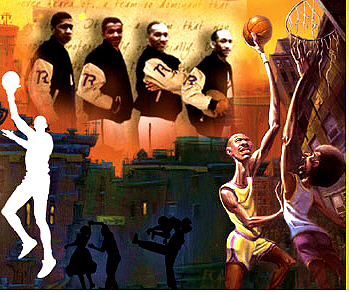The Approaching 100th Anniversary of the Harlem Renaissance (part 1)

The celebration of major historic milestones is a favorite pastime in pretty much every culture. This year, 2011, in the United States many are commemorating the 150th Anniversary of the American Civil War. That means four years from now numerous festivities will take place to observe the same anniversary for Jubilee Day, or the liberation of America’s slaves.
In addition, countries around the world are currently honoring the first United Nations-declared International Year for People of African Descent.
Flip the calendar forward by almost a decade and we find ourselves approaching another major milestone: the 100th anniversary of the beginning of the Harlem Renaissance. The past couple of years have already seen celebrations of the centennials of the National Association for the Advancement of Colored People (NAACP) and the National Urban League. Both organizations during the Harlem Renaissance played key roles–– as advocates for racial equality and as publishers of influential magazines that featured prize-winning works by now major authors like Dorothy West, Jean Toomer, and Zora Neale Hurston.
Exactly When did the Harlem Renaissance Start?
Marking the centennial of the NAACP and the National Urban League was relatively easy because records indicate clearly enough when they started. The actual beginning and ending of the Harlem Renaissance itself is not so well defined, though most scholars will say it lasted from 1920 to 1940.
One of the great leaders of the Harlem Renaissance, James Weldon Johnson, noted in his book Black Manhattan, that the 1922 publication of Claude McKay’s book, Harlem Shadows, represented a major history-altering event. In Johnson’s words, “Claude McKay’s poetry was one of the great forces in bringing about what is often called the ‘Negro literary renaissance.’”
But celebrated author Langston Hughes thought the history-making Broadway musical Shuffle Along kicked the Renaissance into high gear in 1921. As he put it, Shuffle Along “gave a scintillating send-off to that Negro vogue in Manhattan, which reached its peak just before the crash of 1929…” Still others will say it started with the end of World War I in 1918, or with the Great Migration of African Americans into industrial areas of the U.S. North and Midwest during the 1910s.
Enter “The New Black”
NBA Hall of Famer Kareem Abdul-Jabbar co-wrote On the Shoulders of Giants, the recent acclaimed documentary on the Harlem Rens basketball team. From his highly-regarded perspective, the Harlem Renaissance never truly ended at all but simply changed names, at one point becoming the Civil Rights Movement, and at another the Black Arts Movement.
In these ultra-techno days of 2011, some authors such as Diann Blakely ––taking her cue from the title of Evie Shockley’s newest poetry collection–– have adopted the term The New Black to describe the current wave of African-American author-poets who have won substantial recognition for their literary labors. A number of authors listed in this group are in fact well-established literary veterans. Blakely, a White southerner who has sought to honor the positive influence of Blacks in her life, described the cultural significance of the years 2010 and 2011 as follows:
“…A perfect microcosm of a great third flowering of African-American poetry in less than a century because of the great number of distinguished titles published, plus the awards and honors conferred upon African-American poets.”
Blakely’s list of “New Black” poets was recently published on the Best American Poetry Series website. One should note that her assessment is a well-honed one informed by her own status as an award-winning author of three volumes of poetry, as a former editor for Antioch Review, and a nominating editor for the highly-acclaimed Pushcart Prize Series.